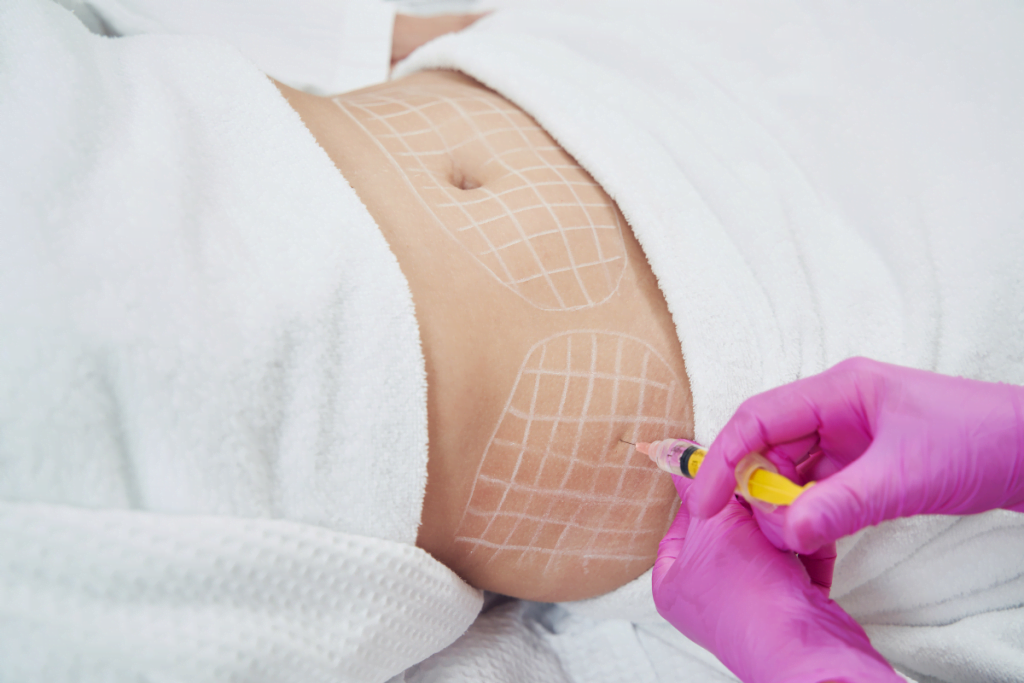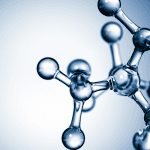Interest in body contouring without surgery keeps rising, and so do expectations. For clinics, non-invasive fat removal now spans multiple device classes, plus adjacent options like injectables and medical weight management. That variety can improve fit for different body areas, budgets, and downtime preferences. It also increases the need for standardized screening, documentation, and outcome communication.
This briefing focuses on practical selection factors for licensed healthcare teams. It covers how the main technologies work at a high level, how to talk about likely results without overpromising, and how to reduce avoidable risk. It also flags where marketing terms outpace evidence, including “fat melting” language and unverified claims.
Why it matters: Your process matters as much as your platform for consistent outcomes.
Key Takeaways
- Match modality to tissue, not trend
- Screen for contraindications and expectations
- Standardize photos and measurements
- Plan for adverse event pathways
- Document device, settings, and aftercare
non-invasive fat removal: What’s Changing in 2024–2025
Across 2024–2025, the biggest shift is not a single “new best” platform. It is better segmentation of patients, body areas, and endpoints. Many practices now treat fat reduction, muscle toning, and skin texture as separate goals. They may be addressed in staged plans rather than one visit or one device. This reduces mismatch between what a technology can deliver and what a patient expects.
Another change is the growing overlap with obesity care. GLP-1–based pharmacotherapy (anti-obesity medications) can change body composition and patient priorities. Some patients seek localized contour refinement after broader weight reduction. If your practice touches both, align messaging so “spot reduction” is not framed as weight-loss treatment. A body contouring workflow should stay focused on localized adiposity (fat deposits) and silhouette documentation.
MedWholesaleSupplies supports licensed clinical accounts and may request credential verification before fulfillment.
For broader trend context, see Non-Surgical Aesthetic 2025 and Safe Non-Invasive Procedures.
Modality Primer: Mechanisms, Body Areas, and Trade-Offs
Most device-based fat reduction approaches work by stressing adipocytes (fat cells) through cold, heat, or mechanical forces. The body then clears cellular debris over time through normal physiologic pathways. Techniques differ in comfort profile, the way energy is delivered, and the types of tissue they affect. That matters for areas like the submental region (under the chin), abdomen, and flanks, where skin quality and fibrous septae can change how treatment “shows.”
Keep terminology clean with patients and staff. “Non-invasive” typically means no needles and no incisions. Injectable lipolysis products, even when marketed for “fat dissolving,” are minimally invasive because they breach skin. That distinction affects consent language, infection-control steps, and adverse event triage.
Quick Definitions You Can Reuse in Consults
Cryolipolysis (fat freezing) cools tissue to selectively stress adipocytes. Radiofrequency fat reduction uses controlled heating that may also affect dermal collagen (support proteins). Laser lipolysis non invasive refers to external laser energy aimed at heating fat and related tissue. Ultrasound cavitation fat reduction uses acoustic energy that can create mechanical effects within tissue. Electromagnetic muscle stimulation focuses on muscle contraction rather than adipocyte injury, so it fits different goals.
| Approach | Primary Target | Common Trade-Offs | Operational Notes |
|---|---|---|---|
| Cryolipolysis | Localized subcutaneous fat | Temporary numbness, discomfort; rare unexpected tissue responses | Strong need for screening cold-related conditions |
| Radiofrequency | Thermal effect in fat and dermis | Risk of burns if technique is inconsistent | Technique and skin contact quality are critical |
| External laser | Heating of targeted tissue layers | Heat sensation; risk of surface injury if misapplied | Training and maintenance logs support consistency |
| Ultrasound | Mechanical/thermal tissue effects | Comfort variability; requires careful area selection | Protocols should define treated zone boundaries |
| Muscle stimulation (EM) | Muscle contraction | Not a fat-first tool; soreness may occur | Useful when tone is the main endpoint |
For a broader overview of combined plans, see Body Contouring Treatments.
Cryolipolysis Deep Dive: How It Works and What to Watch
Cryolipolysis is best understood as controlled cooling of a defined tissue fold. The goal is to preferentially stress adipocytes compared with surrounding structures. Post-treatment, inflammatory signaling and clearance can occur over weeks. This is one reason practices often schedule follow-up photography and measurements later rather than immediately.
From an operations standpoint, the key variables are applicator selection, tissue draw, contact quality, and consistent documentation. Because the treatment is localized, patient selection is central. Cryolipolysis is commonly positioned for “stubborn” pockets such as abdomen, flanks, and sometimes submental fullness, but expectations should be anchored to contour change, not generalized weight reduction.
Contraindications and Risk Language
Contraindications for cryolipolysis can include cold-related disorders such as cryoglobulinemia, cold urticaria (cold-triggered hives), or paroxysmal cold hemoglobinuria. You will also want a consistent approach to evaluating skin integrity, sensory issues, and prior procedures in the same area. Screening should be paired with plain-language counseling, including the possibility of temporary numbness, bruising, firmness, or discomfort. Rare events have been reported in the broader literature and post-market surveillance; your consent and triage plan should reflect that reality without sensationalizing it.
Inventory is sourced through screened distributors to support brand authenticity documentation.
Patient Selection and Risk Controls for Energy-Based Contouring
Even when devices are “low downtime,” the clinic still owns patient selection and follow-up pathways. The most common avoidable problems come from treating the wrong endpoint or skipping a red-flag history. Align each consultation around three questions: What is the target tissue (fat, muscle, skin laxity), what is the patient willing to tolerate (sensation, bruising, temporary numbness), and what is the patient’s time horizon for visible change?
In many practices, the highest-friction requests involve non surgical fat removal from stomach and flanks. These areas can respond differently depending on fibrous tissue, prior pregnancies, diastasis recti (abdominal separation), and skin laxity. It helps to separate “bulk reduction” goals from “tightening” goals. When patients ask whether treatments can tighten skin, keep language conservative. Some heating-based modalities may improve mild laxity, but they do not replace surgical excision for significant redundancy.
Build a screening script that supports non-invasive fat removal while staying modality-specific. For example, cold sensitivity matters most for cryolipolysis, while heat tolerance and pigmentation risk may matter more for certain laser or RF approaches. Also consider medication history and implanted devices where relevant. Policies vary by jurisdiction and device labeling, so keep your checklist aligned to your IFU (instructions for use) and local regulations.
Pitfalls That Distort Outcomes (and Reviews)
- Inconsistent photos and lighting
- Changing weight during follow-up
- Treating laxity as “fat”
- Underspecified aftercare instructions
- No plan for delayed concerns
Online non invasive fat removal reviews can be useful, but they are rarely standardized. Encourage your team to interpret reviews through a clinical lens: Was baseline comparable, were photos consistent, and did the patient describe a realistic endpoint? Your own documentation and follow-up structure will shape satisfaction more than marketing language.
Setting Expectations: “Before and After” Without Overpromising
Most non-surgical fat reduction conversations succeed or fail on expectation-setting. Patients often arrive with social media “before and after” imagery that lacks context. Your clinic can counter this with standardized photography, repeatable measurement points, and a defined reassessment window. Document posture, camera distance, and lighting. Use the same landmarks every time. This supports internal quality review and clear communication when results are subtle.
It also helps to normalize variability. Non invasive fat reduction results depend on baseline thickness, body composition changes during follow-up, and how the treated area naturally stores fat. When patients ask “what is the best non surgical fat removal procedure,” reframe the question toward “best for which goal and body area.” A cryolipolysis plan can differ from radiofrequency fat reduction or muscle stimulation, even when the concern is “stubborn belly fat.”
Quick tip: Use one outcomes template across modalities to reduce inconsistent messaging.
When discussing recovery time for non invasive fat removal, avoid universal timelines. Many patients resume normal activity quickly, yet temporary tenderness, bruising, altered sensation, or swelling may occur depending on modality and individual factors. If you treat the submental area, set expectations about transient swelling and the visibility of any contour irregularities during healing. If you treat flanks, discuss how garments and daily friction can affect comfort.
Workflow and Documentation Checklist for Clinics
Operational consistency is a clinical quality tool. A repeatable workflow also protects staff and reduces rework when patients call with questions. For non-invasive fat removal programs, consider a single packet that covers screening, consent, photo standards, and follow-up cadence. Then layer modality-specific items (for example, cold screening for cryolipolysis) rather than maintaining separate systems.
Products are intended for professional healthcare settings and supplied for clinical use, not consumer retail.
Clinic Workflow Snapshot
- Verify credentials and scope
- Document baseline photos and measurements
- Confirm device IFU and contraindications
- Perform treatment and record parameters
- Provide written aftercare instructions
- Schedule reassessment and photo repeat
- Record any adverse events and follow-up
Operational Checklist (Practical, Non-Clinical)
- Consent language aligned to modality
- Standard photo protocol and storage
- Device maintenance and calibration logs
- Applicator inventory and lot tracking
- Escalation pathway for delayed complaints
- Staff competency sign-offs and refreshers
- Cleaning and infection-control procedures
If your practice also offers injectable contour services, separate them clearly from device treatments in documentation. For background reading on injection-based approaches marketed in some regions, see Aqualyx Treatment Overview, Fat Dissolving Injections, and Phosphatidylcholine For Contours. When evaluating any “fat melting treatment” or “fat melting medicine” claims, confirm regulatory status and evidence quality before incorporating them into services.
Where procurement is relevant, plan for documentation review, especially with prescription-only items. Some clinics prefer suppliers with US distribution to simplify operational coordination.
Integrating Weight Management and Contouring Without Blurring Claims
Body contouring and medical weight management solve different problems. When they are combined, the clinic must keep indications and expectations separate in the chart and in patient education. Weight-loss pharmacotherapy can reduce overall adiposity, while contouring focuses on localized shape. After weight reduction, some patients may shift attention to double chin fullness, flank contour, or abdominal pockets that remain.
If your organization supports obesity care, align teams on handoffs and messaging. Educational resources can help staff speak clearly without making device outcome guarantees. For related reading, see Weight-Loss Injection Overview, Wegovy Therapy Overview, and Ozempic Weight-Loss Context. Product references, such as Wegovy FlexTouch or Lemon Bottle Ampoule, should remain within compliant procurement and scope-of-practice processes.
Patients will still ask for “best non invasive fat removal 2024” lists and device comparisons. A better clinic response is a structured consult that maps goals to modality: fat reduction vs muscle building vs skin quality. For example, “CoolSculpting vs Emsculpt” is often a comparison between fat-focused cryolipolysis and muscle-focused electromagnetic stimulation. “Fat freezing vs laser lipo” usually compares different energy delivery and comfort profiles, not a universal hierarchy.
Authoritative Sources
Use regulator and public-health sources to support your internal policies, especially around device oversight and safety reporting. These references are helpful for staff training, incident response plans, and documentation standards. Your final protocols should also follow your device IFU and local requirements.
- FDA overview for medical devices
- FDA MedWatch adverse event reporting
- CDC infection prevention in outpatient settings
Further reading can include your own internal audits of treatment photography, follow-up adherence, and patient-reported experience measures. Reliable US logistics can support continuity, but clinical outcomes still depend on process discipline.
This content is for informational purposes only and is not a substitute for professional medical advice.






